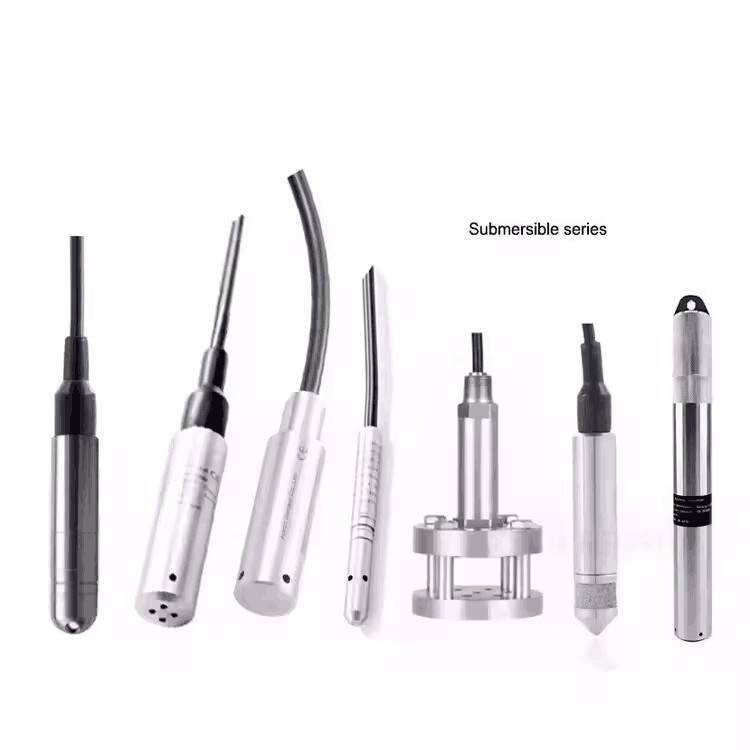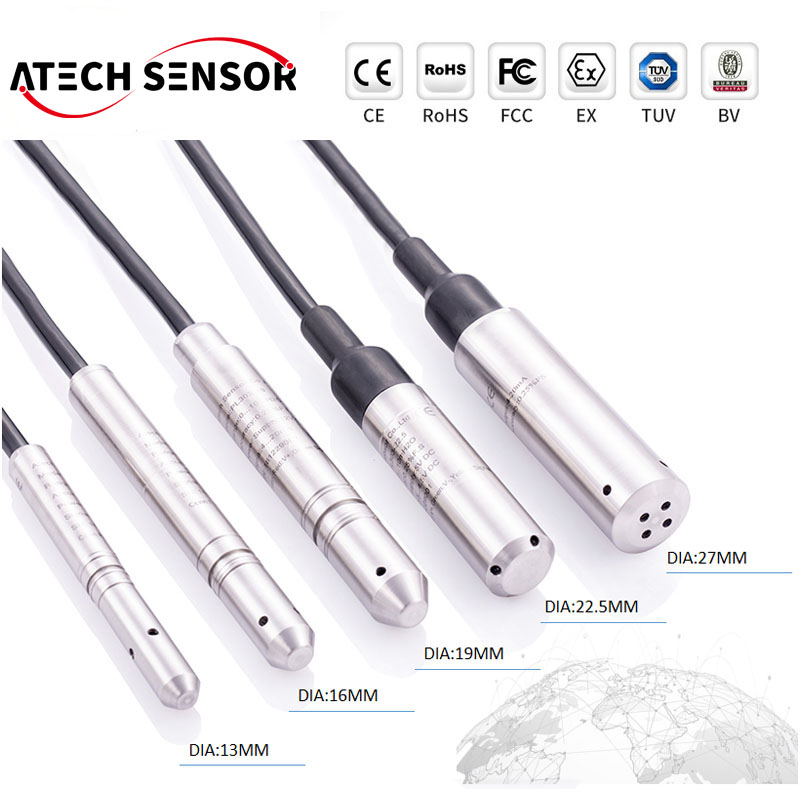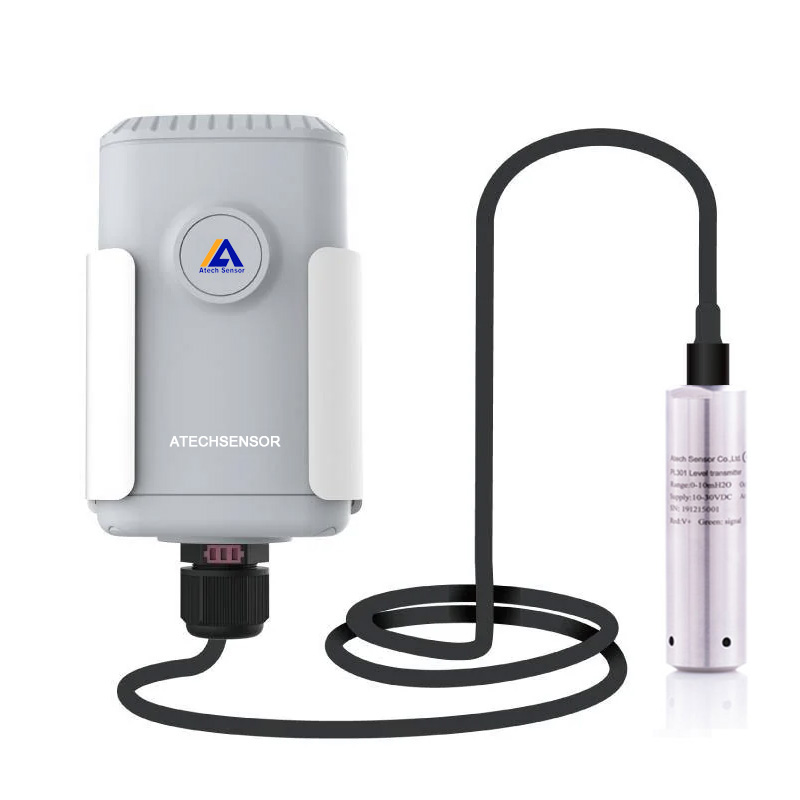Accurate level measurement is crucial in industries ranging from water treatment to chemical processing. Among the various sensor technologies available, submersible level sensors stand out for their durability, precision, and performance in harsh conditions. In this guide, we will explore how these sensors work.
1.What Are Submersible Liquid Level Sensors?
Submersible liquid level sensors, also known as submersible level transmitters, submersible depth sensors, or hydrostatic level sensors, are devices designed to measure the level of a liquid by being placed at the bottom of a tank, well, or reservoir. These sensors operate using hydrostatic pressure measurement, which calculates the liquid level based on the pressure exerted by the liquid column above the sensor. The output signal from the sensor is directly proportional to the liquid level, ensuring straightforward and accurate measurement.
2.How Do Submersible Level Sensors Work?
Submersible level sensors measure the head pressure of a liquid. The sensor sits at the tank’s bottom, and the pressure from the liquid above compresses a sensing diaphragm inside the sensor housing. This pressure is then converted into an electrical signal—commonly a 4-20mA analog output, voltage, or RS485 output—which represents the liquid level. The 4-20mA analog output is widely used for continuous measurement and integration with remote monitoring systems.

3.The key advantages of this hydrostatic method include:
- Unaffected by foam, vapor, or surface turbulence
- No moving parts, reducing maintenance
- Highly accurate, with tolerances as low as ±0.125%
- Works with aggressive chemicals and clean water
Submersible sensors are IP68-rated and often use ceramic, stainless steel, or PTFE diaphragms. The sensor cable is vented and shielded to compensate for atmospheric pressure.
4.Key Applications
Submersible liquid level sensors are used across diverse industries:
- Water Treatment – Municipal and industrial tanks, reservoirs, and pipelines
- Oil & Gas – Monitoring tank levels in upstream and downstream operations
- Chemical Processing – Measuring corrosive liquids in storage and mix tanks
- Environmental Monitoring – Groundwater, river, lake, and ocean level tracking
- Food & Beverage – Sanitary fluid level monitoring in hygienic processes
These sensors are invaluable in both fixed and mobile systems and are easy to integrate into SCADA, DCS, or PLC systems. Submersible liquid level sensors are trusted across various industries for their versatility and reliability.
5.Level Sensor Selection: How to Choose the Right Submersible Sensor
Selecting the right submersible sensor for your application is essential for achieving precise measurements and reliable performance. Start by considering the type of liquid you need to measure—whether it’s water, chemicals, or another fluid—as this will determine the compatibility of sensor materials. Assess the temperature and pressure ranges your sensor will encounter, as these factors can impact both the sensor’s accuracy and lifespan.
Hydrostatic sensors are particularly well suited for measuring liquid levels in storage tanks, offering consistent performance even in challenging conditions. For applications where non-contact measurement is preferred, such as with aggressive or hazardous liquids, ultrasonic level measurement may be the right technology. Evaluate the sensor’s electrode rod material, differential pressure range, and output signal (such as analog or digital) to ensure seamless integration with your monitoring system.
By carefully matching the sensor’s specifications to your tank type, liquid media, and environmental conditions, you can ensure accurate level measurement and dependable operation. Taking the time to select the right sensor will help you achieve reliable performance and long-term success in your level measurement applications.

6.Liquid Level Measurement in Harsh Environments
Measuring liquid level in harsh environments demands sensors engineered for durability and high accuracy. Hydrostatic sensors are a popular choice for accurate level measurement in settings with extreme temperatures, high pressures, or corrosive liquids. Their robust construction allows them to deliver reliable performance and continuous monitoring, even in the most challenging conditions.
In addition to hydrostatic sensors, ultrasonic level measurement and radar level sensors provide non-contact solutions that excel in environments where direct contact with the liquid is not possible or desirable. When choosing a sensor for harsh environments, it’s important to consider the sensor’s material, cable length, and sealing to ensure it can withstand exposure to aggressive media and prevent ingress of contaminants.
Look for level sensors that offer high accuracy, reliability, and easy setup to minimize maintenance and downtime. By selecting the right sensor technology and construction, you can achieve consistent, accurate level measurement and maintain reliable performance in even the toughest industrial applications.
7.Level Measurement System Installation: Best Practices
Proper installation is key to ensuring your level measurement system delivers precise measurements and consistent performance. Begin by selecting the right sensor for your specific application, taking into account the liquid type, tank configuration, and environmental factors. Ensure the sensor is mounted securely and aligned correctly to avoid measurement errors.
During installation, pay close attention to factors such as atmospheric pressure, voltage ratio changes, and pressure variations, as these can affect measurement accuracy. It’s important to configure the system according to the manufacturer’s guidelines. Notably, including setting up the output signal and calibrating the sensor as needed.
Consulting with an expert or following detailed installation instructions can help you avoid common pitfalls and ensure reliable performance from your level measurement system. By adhering to best practices, you’ll achieve accurate level measurement, minimize maintenance, and extend the life of your sensors.
8.Level Sensor Calibration: Ensuring Accurate Readings
Regular calibration of your level sensor is essential for maintaining highly accurate measurements and reliable performance. Calibration involves adjusting the sensor’s output signal to match the actual liquid level, accounting for variables such as temperature, pressure, and electrical conductivity. This process ensures that your sensor provides accurate readings, regardless of changes in the tank environment.
To calibrate a level sensor, use specialized equipment like a calibration tank or a reference sensor, and always follow the manufacturer’s recommended procedures. Regular calibration helps prevent sensor drift and maintains the accuracy required for critical applications.
By prioritizing calibration, you can ensure your level sensor consistently delivers reliable performance, accurate liquid level readings, and optimal operation in your tank or process system.

9.Level Sensor Maintenance: Maximizing Sensor Lifespan
Routine maintenance is vital for maximizing the lifespan of your level sensor and ensuring continuous monitoring of liquid levels. Key maintenance tasks include cleaning the sensor to prevent buildup, inspecting for signs of damage or corrosion, and verifying the output signal for accuracy. Regular calibration should also be part of your maintenance schedule to maintain measurement precision.
Consider the sensor’s material, cable length, and sealing to protect against harsh conditions and extend service life. By following a proactive maintenance plan, you can minimize downtime, reduce the risk of unexpected failures. Additionally, ensuring your level sensor continues to provide accurate and reliable performance throughout its operational life.
10.Why choose ATECH's diving sensors?
Wide selection of sensor materials and diaphragm types
Unaffected by foam, vapor, or turbulence
Seamless integration with displays and remote monitoring
Field-proven in thousands of chemical, municipal, and environmental installations
Built to endure corrosive and high-pressure applications
Suitable for a wide range of liquids, tank types, and challenging environments
11.Conclusion
Submersible level sensors are the most reliable solution for measuring liquid levels in tanks, wells, and reservoirs, especially in harsh environments. Our product line boasts exceptional accuracy, durability, and chemical resistance. Whether you are monitoring clean water, sludge, or corrosive acids, there is sure to be a submersible level sensor that meets your needs.Float switches provide a simple and cost-effective solution for basic level detection in water, chemicals, or fuel tanks, while submersible level sensors are particularly suited for applications requiring continuous monitoring and high precision, such as in fuel tanks.

